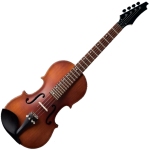Clapping Exercises
 For improving the counting of singers, I developed clapping exercises. These canons are meant to do without sheet music. The singers will learn to internally visualise the different beats of the bar.
For improving the counting of singers, I developed clapping exercises. These canons are meant to do without sheet music. The singers will learn to internally visualise the different beats of the bar.
Three-Part Warming-Up Exercise with Mediants
 For my female vocal group, I wrote a three-part warming-up exercise. At first, all voices are singing the melody in unison once. Next, you may sing the exercise in three parts. The lower voice is singing the exact notes from the melody, but a fourth lowered. The high voices are singing in harmony with the melody a third above:
For my female vocal group, I wrote a three-part warming-up exercise. At first, all voices are singing the melody in unison once. Next, you may sing the exercise in three parts. The lower voice is singing the exact notes from the melody, but a fourth lowered. The high voices are singing in harmony with the melody a third above:
Warm-up Exercise “Major-Minor-Major”
 In this warm-up exercise the choir is singing a melody in major, next in minor and finally in major again:
In this warm-up exercise the choir is singing a melody in major, next in minor and finally in major again:
Polyfonic Warm-Up
 Most warm-ups I think of have two layers at most. But this time I have an exercise with three layers, in which the two upper voices imitate each other:
Most warm-ups I think of have two layers at most. But this time I have an exercise with three layers, in which the two upper voices imitate each other:
Swinging Pachelbel
 Lately I heard the lovely Canon in D by Pachelbel again. Because the chords are repeating, the music can easily be made into a warm-up for multiple voices. Here is my attempt to create a swinging Pachelbel. The canon now is in G:
Lately I heard the lovely Canon in D by Pachelbel again. Because the chords are repeating, the music can easily be made into a warm-up for multiple voices. Here is my attempt to create a swinging Pachelbel. The canon now is in G:
Warm-Up with Sixth
 This exercise for singing in canon is built up of seconds and sixths. The warm-up looks like the exercise form my book ‘Harmoninic warm-ups’, but it is just a little different:
This exercise for singing in canon is built up of seconds and sixths. The warm-up looks like the exercise form my book ‘Harmoninic warm-ups’, but it is just a little different:
Warm-Up with Latin Syncopations
 In one of my choirs there is a singer who insists on doing swinging warm-up exercises. Thus, I wrote another. This time, there are fast syncopations in a latin style:
In one of my choirs there is a singer who insists on doing swinging warm-up exercises. Thus, I wrote another. This time, there are fast syncopations in a latin style:
 In this warming-up exercise the singers are divided into two groups. In turn these groups sing a number of notes. The melody of the exercise is like this:
In this warming-up exercise the singers are divided into two groups. In turn these groups sing a number of notes. The melody of the exercise is like this:




